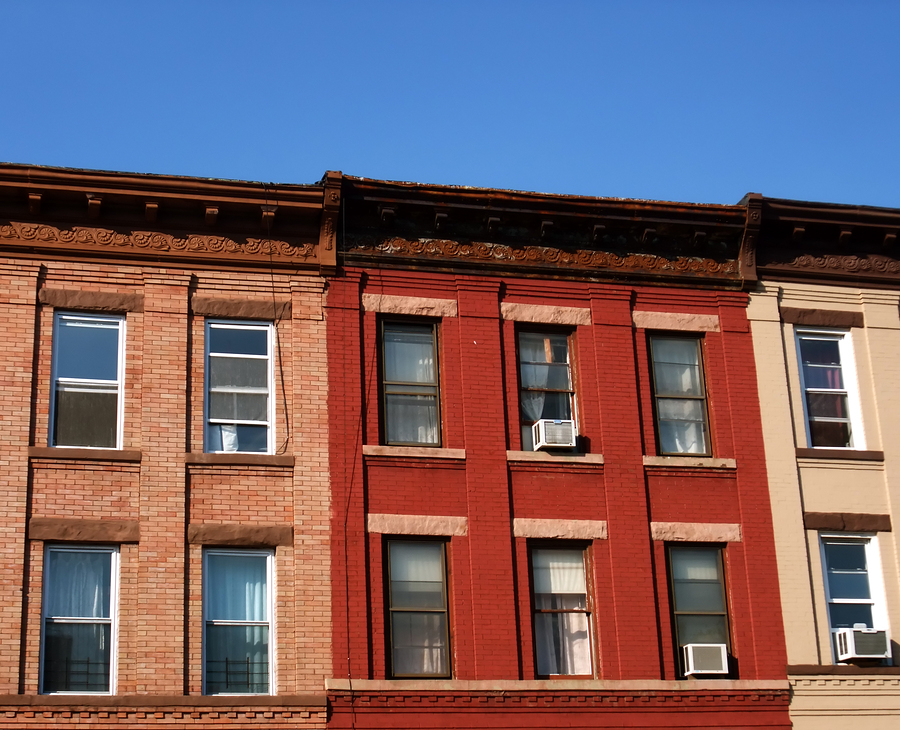If you’re looking to invest in apartment buildings, this article has a good checklist. Keep in mind that apartment buildings meeting some of the following requirements will fall under the “value-add” category.
A value-add property requires someone who can
- bring the skills to take over for troubled property management
- make improvements and repairs to the property
- reposition the tenant base
- improve overall property operations
It’s a good and often profitable strategy—but not one for the faint of heart. In spite of everything you read on the Internet.
It’s easy to bite off more than you can chew when dealing with a value-add apartment building. But if you’re ready to do some work, a value-add property can be a rewarding experience both personally and financially.
10 Things You Should Look for When Buying an Apartment Building:
1. Central location, desirable to tenants
The property is within walking distance of grocery, restaurants and retail. Is located in a major metropolitan area, near centers of employment and within immediate vicinity of mass transportation.
2. Property is poorly managed
The current manager is just mowing the lawn and fixing leaks, there are multiple sources of untapped income (laundry, parking, storage, community services, vending, etc.), and multiple opportunities for shopping new services and lowering expenses.
3. Verifiable upside in existing rents to market
The current rents are below the average market rent rate. The current management has a poor collection history (the party’s over). Marketing improvements and enhanced resident screening will attract new residents at higher rental amounts.
4. Motivated seller
The property has had the same owner for the last 15-20 years. An owner who is looking to off-load the property and motivated to sell (see #2).
5. Needs some TLC and not a total rehab
The apartment building has no major deferred maintenance. There’s a 1-2 year proposition to bring the property to market standards, such as: new carpet, shower surrounds, lighting, paint, parking, appliances, etc.
6. Occupancy at 70% or above
Maximum two to three-month period to bring the building to market occupancy. An occupancy below 70% spells trouble and will need significant financial reserves on the buyers part.
7. Good unit mix
Look for an apartment building with a unit mix of one, two and three bedroom unfurnished units. Note this will vary by market and renter demand – avoid all studio units.
8. Full financials are provided and verifiable
Rent rolls, leases, maintenance records, P&L, capital improvements, etc. are readily available for the past 12-24 month period.
9. “Free” utilities and separately metered units
The opportunity exists to easily introduce a Resident Utility Bill-back System (RUBS) where tenants are billed back for utility usage.
10. “C” property in an area that supports “B” properties
New management and cosmetic improvements (paint inside and/or outside, hardwood flooring, new lighting) will improve acquisition from a class C to a class B property.
Bonus Material
You can download a complete Apartment Building Due Diligence Checklist at this link: Free Multifamily Investing Resources.
***
Related Articles
5 Big Multifamily Deal Analysis Mistakes to Avoid
Money Rules For Real Estate Investing
***
Latest posts by Theresa Bradley-Banta (see all)
- Multifamily Common Areas Maintenance & Management Tips - March 31, 2020
- 8 Tenant Gift Ideas That Will Boost Your Bottom Line - November 11, 2019
- Need a Package Delivery System at Your Multifamily Rental Property? - October 28, 2019





I’m looking to purchase apartment building around 10 units complex. Iam new to this, What is the most important things I should be considering before buying?
You’re in the right place to learn about multifamily investing. Use the search bar on our blog to narrow down topics. In my opinion the #1 thing you must know intimately is your immediate submarket. With solid local (and national) market research you can correctly value a property and design a plan for the day you close. You can also hire us to mentor you through the process. Best wishes!
Theresa